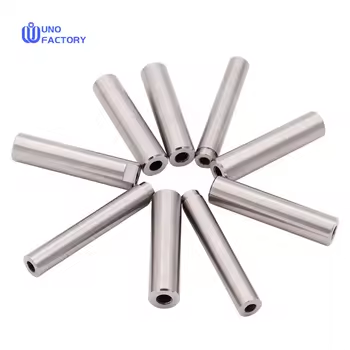Time to read: 6 min

Deburring is a critical step in the metalworking process, ensuring parts are smooth and free from burrs that can compromise safety and aesthetics. This article delves into the causes of burrs, their types, and various deburring methods to achieve a high-quality finish. We'll also discuss design considerations for minimizing burrs and the benefits of choosing UnoFactory for precision machining services.
In the realm of metalworking and manufacturing, the quest for precision and quality is unending. A crucial aspect of this pursuit is the process of deburring, which involves the removal of sharp edges left on metal surfaces after machining operations such as drilling, milling, and turning. These unwanted projections, known as burrs, can mar the appearance of a part and even pose a safety hazard. This article will guide you through understanding burrs, their formation, and effective deburring techniques to produce parts with a flawless finish.
What Causes Burrs in Metalworking?
Burrs are the small, sharp imperfections that occur on the surface of machined parts. They are a common byproduct of processes like stamping, milling, and other cutting operations. The formation of burrs can be attributed to several factors:
- Operator Skill: The proficiency of the machine operator plays a significant role. Skilled operators can minimize burrs by correctly configuring the machine and executing the process with precision.
- Material Thickness and Grade: The type of material used can also influence the occurrence of burrs. Higher quality, easier-to-cut materials tend to produce fewer burrs.
Burrs can take different forms, including rollover, breakout, and poison burrs, each characterized by its unique appearance and location on the machined part.
Deburring Methods for Smooth Finishes
To achieve a smooth, burr-free surface, various deburring methods are employed:
- Manual Deburring: This traditional method involves the use of simple tools like deburring knives, sandpaper, and files. It is cost-effective for small parts but can be time-consuming and labor-intensive.
- Mechanical Deburring: Methods like grinding and rolling offer a faster and more efficient alternative to manual deburring, suitable for larger batches and complex shapes.
- Electrochemical Deburring: This advanced technique uses electricity and chemicals to remove burrs, especially effective in hard-to-reach areas within small metal parts.
- Hole Deburring: Designed for internal deburring, this method employs a spring-loaded cutting tool to smooth out burrs within holes without causing additional damage.
- Brushing: Using abrasive brushes mounted on machine tools, this method offers a fast and cost-effective way to deburr both simple and complex parts.
Design Considerations for Cost-Effective Deburring
Incorporating certain design elements can minimize or even prevent the formation of burrs, thus saving time and costs. For instance, avoiding unnecessary sharp edges in the design phase can reduce the need for subsequent deburring. Additionally, choosing the right material and optimizing the machining process can also lead to fewer burrs.
The Role of UnoFactory in Precision Machining
When it comes to precision machining and achieving a flawless finish, UnoFactory stands out as a reliable partner. We offer a range of services tailored to meet the specific needs of your project, whether it's quick-turn prototypes or large-scale production runs. Our commitment to quality ensures that your parts are not only burr-free but also meet the highest standards of precision and functionality.
At UnoFactory, we understand the importance of smooth surfaces and precision in every detail. That's why we employ state-of-the-art deburring techniques and offer a free design review to ensure manufacturing feasibility. With our services, you can expect parts that are not only free from burrs but also ready for assembly or end-use.
Conclusion
Deburring is an essential step in the metalworking process, ensuring both the safety and aesthetic appeal of the final product. By understanding the causes of burrs and employing the right deburring techniques, manufacturers can achieve the smooth, high-quality finishes that set their products apart. UnoFactory is here to partner with you in this journey, offering precision machining services that deliver the perfect blend of quality, efficiency, and cost-effectiveness.




